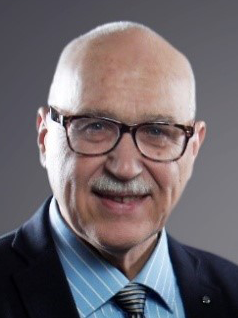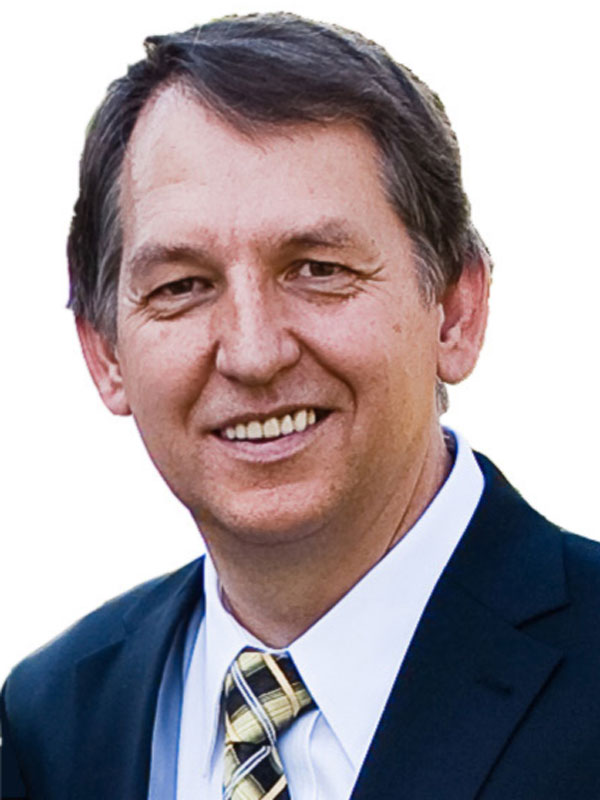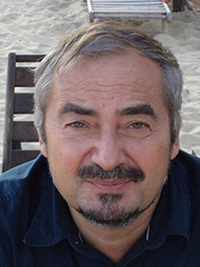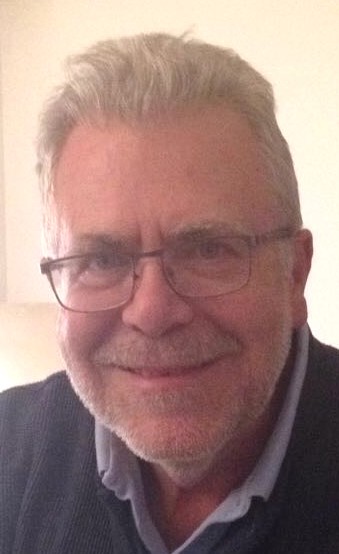|
|
|

|
Javier Solis
«Coherent scatter-controlled phase change grating structures in silicon: Femtosecond-resolved imaging during laser structuring»
|
| Javier Solis is Research Professor at the Institute of Optics (IO) of the National Research Council of Spain (CSIC) where he is presently Head of the Department of Non-linear, Ultrafast and Nano-scale Photonics. He has also been Director ((2003-2008) and Deputy Director (2000-2003) of the IO. Since 1992 he is responsible of the Ultrashort Laser Pulse Laboratory of the Laser Processing Group at IO. At present his research interests include: laser-matter interaction, laser processing for optical applications, ultrafast laser micro-and nano-structuring of materials, ultrafast dynamics and non-linear optics. Prof. Solis has published more than 170 research papers in international research journals in these topics. He is Senior Member of the OSA, among other research societies. |
|

|
Valery V. Tuchin
«Optical clearing as a promising technology for in vivo laser diagnostics and treatment of hidden pathologies»
|
|
Valery V. Tuchin is a Professor and holds the Chair/Institute of Optics and Biophotonics of Saratov State University (National Research University of Russia). He is also a Head of Laboratory on Laser Diagnostics of Technical and Living Systems, Institute of Precision Mechanics and Control, RAS, a supervisor of Interdisciplinary Laboratory on Biophotonics of Tomsk State University (National Research University of Russia) and Laboratory of Femtomedicine at ITMO University, Guest Professor of HUST (Wuhan) and Tianjin Universities of China, and Adjunct Professor of the Limerick University (Ireland) and National University of Ireland (Galway). His research interests include biophotonics, tissue optics, laser medicine, tissue optical clearing, and nanobiophotonics. He has published more than 700 papers (Web of Science), 27 monographs and textbooks, and 58 book chapters. Prof. Tuchin is also a holder of more than 50 patents. His h-index is 64 with 19096 total citations (Google Scholar).
He is a fellow of SPIE and OSA, has been awarded Honored Science Worker of the Russia, Honored Professor of Saratov University, SPIE Educator Award, Finnish Distinguished Professor - FiDiPro (Finland), Chime Bell Prize of Hubei Province (China), and Joseph W. Goodman Book Writing Award (OSA/SPIE). Prof. Tuchin is the recipient of the 2016 NanQiang Life Science Series Lectures Award of Xiamen University, China.
|
|

|
Petr Nikitin
«Ultrasensitive optical monitoring of interactions between biomolecules and nanoparticles: applications for advanced biosensors»
|
| Petr I. Nikitin was born in 1956. He received his MS with Honors and Ph.D. from the renowned Moscow Institute of Physics and Technology in 1979 and 1983, respectively. Over the years, he has been the Head of Biophotonics Laboratory at the Prokhorov General Physics Institute, RAS. Dr. P. Nikitin has developed several highly sensitive optical methods for direct monitoring of molecular interactions with compact instruments, the phase surface plasmon resonance (SPR) for optical chemo- and biosensors, optoelectronic sensors based on the SPR and SERS on Au-Si grating structures, the methods of spectral-correlation and spectral-phase interferometry, several pioneering nanotechnology-based biosensors for medical diagnostics, food control, environmental monitoring and detection of biological weapons. Discovered new phenomena such as ferromagnetic liquid nano-droplets, reversible interaction of gold films with electroactive gases, investigated magnetic and electric fields generated by laser plasma. He also invented the ultrasensitive method of magnetic particle quantification (MPQ) based on non-linear magnetization of nanoparticles and applied it for in vitro diagnostics and in vivo biomedical studies. The biocomputing nanoparticles for theranostics is another breakthrough development featured on the cover page of the Nature Nanotechnology journal. The author of more than 150 papers in high-ranking journals, 350 conference papers and 30 granted patents. He was awarded the Kapitza Fellowship from the Royal Society (Great Britain, 1995). Dr. Nikitin has successfully directed research projects supported by EC, INTAS, ISTC, the Royal Society of Great Britain, the Swiss National Science Foundation, RSF and RFBR. Member of International Advisory Committees of several major conferences: Europt(r)ode, EMSA, etc. |
|

|
Valentin Petrov
«Progress in the generation of ultrashort light pulses in the 2-micron spectral range by passive mode-locking of Tm and Ho bulk solid-state lasers»
|
Valentin Petrov received the M.Sc. degree in nuclear physics in 1983, and the Ph.D. degree in optical physics, for work on mode-locked dye lasers, from the Friedrich-Schiller-University, Jena, Germany, in 1988. He worked as an Assistant Professor at the Quantum Electronics Department, Faculty of Physics, University of Sofia, Bulgaria, from 1988 to 1991. After a one year Post. Doc. research visit to the University of Regensburg, Germany, he joined the Max-Born-Institute for Nonlinear Optics and Ultrafast Spectroscopy (MBI) in Berlin, Germany, in 1992. Further research stays abroad include a JRDC STA fellowship at RIKEN (Japan) in 1996-1997 and a visiting professorship to the Université Joseph Fourier (Grenoble, France) in 2014. His research interests include ultrashort light pulses, laser physics, nonlinear optics, and optical materials. He has co-authored about 500 papers in peer-reviewed scientific journals and about 520 conference presentations. His h-index is 58 with 11150 total citations (Google Scholar). Among the international projects coordinated, he has led two EU consortia within the 6th and 7th Framework Programmes, www.dt-crys.net and www.mirsurg.eu.
Dr. Petrov is a member of the Optical Society of America. He served on the committees of few major international conferences, incl. CLEO, ASSL-ASSP, Europhoton, and Ultrafast Optics, is a regular reviewer for several international optical journals and topical editor (Lasers) in Optics Letters. |
|

|
Klaus Sokolowski-Tinten
«Non-equilibrium structural dynamics in laser-driven materials»
|
| Klaus Sokolowski-Tinten is a Senior Staff Scientist and Adjunct Professor at the Department of Physics of the University of Duisburg-Essen. His main interests are in the field of ultrafast laser-material interactions with particular emphasis on the investigation of the structural dynamics under strongly non-equilibrium conditions using advanced time-resolved scattering techniques with femtosecond X-ray and electron pulses. |
|

|
Luis Roso
«High Repetition Rate Petawatt Lasers: technological challenges and solutions»
|
Prof. Luis Roso was born in Barcelona, Catalonia in December 1955. In 1977, he was double graduated in Physics and Mathematics (simultaneously), at the University of Barcelona, and in 1981, he received the PhD in Physics at the Autonomous University of Barcelona (Advisor Ramón Corbalán).
Prof. Roso was Fulbright Scholar at the University of Rochester, NY, USA, on leave from the Autonomous University of Barcelona. He currently is Catedrático Numerario (Full Professor with Tenure) at the Applied Physics Department of the University of Salamanca from 1992. He established, from scratch, a stable recognized research group on ultraintense lasers starting from the first Spanish terawatt laser, in 2003, to the first Spanish petawatt laser, in 2016.
He recently received the Maria De Maeztu Price of Research Excellence, Given by the University of Salamanca.
Since 2008, Prof. Roso is the Director of CLPU, and promoter of its creation. The Center for Pulsed Lasers (Centro de Láseres Pulsados, CLPU) is a national facility specialized in femtosecond laser pulses with high peak powers. CLPU main laser system is VEGA, the Spanish PW (30J/30fs at one shot per second) opened now to the domestic and international scientific community though competitive access. This is a join appointment with the Professorship.
He is author of more than 200 publications in Scientific Journals on quantum optics, strong laser fields, high harmonic generation, ultrafast laser technology, laboratory astrophysics, nuclear fusion, etc., with more than 100 invited talks in international meetings and 5 patents related to laser technology.
Besides scientific production, Prof. Roso has been devoted to introduce in Spain ultraintense laser technology, the technology he learned about during the Fulbright fellowship at Rochester. Now Spain is in the ultraintense lasers World Map.
It is worth to say that the main scientific contribution of Prof. Roso is not in papers or talks. He was the promoter and is the director now of CLPU. Designing and building such a system, particularly in Spain, is a master challenge. Although the laser itself was made by Amplitude Technologies, Prof. Roso lead the design of the laser architecture (the three arms of VEGA are unique), the laser bay, the laser target area, the experimental chambers, the beam transport, and many more things. This is a time consuming task of a very high scientific level, designed for users. |
|
|
|

